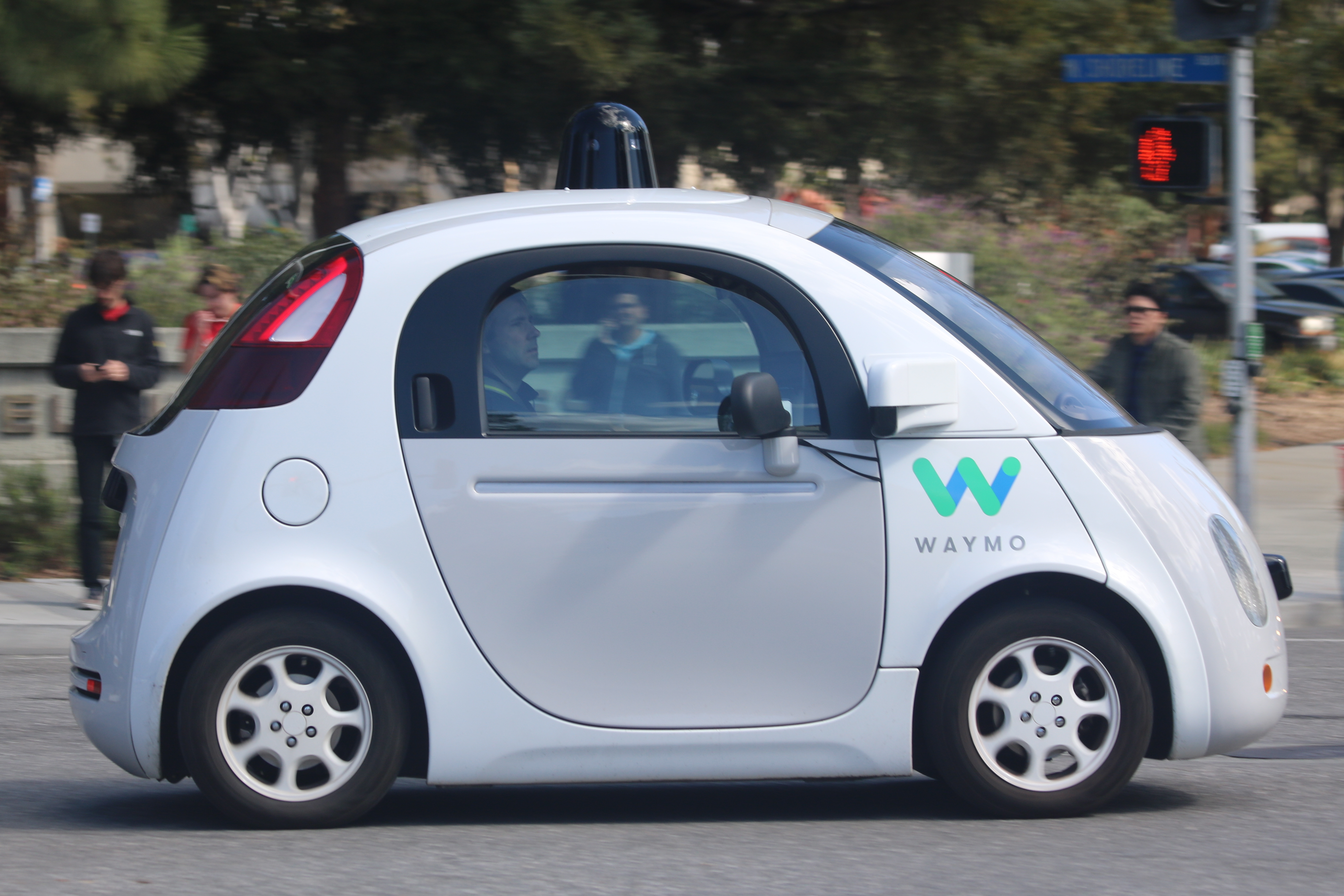
In the bustling streets of San Francisco, where autonomous vehicles weave through pedestrian traffic, crossing guards are increasingly worried about the safety of Waymo’s driverless cars. These guardians of the sidewalks, tasked with ensuring children and families navigate busy intersections safely, have reported alarming near misses with Waymo vehicles, leading to serious concerns about their reliability. Among those sharing their experiences is Theresa Dorn, a school crossing guard with over a decade of service, who vividly recalls moments of panic as she hurriedly jumped out of the way to avoid being struck by a Waymo car. ‘I just don’t think it’s very safe,’ Dorn stated, highlighting the tension between controlling the crosswalk and watching self-driving cars traverse the area. This issue is even more critical when considering that about one in four crossing guards interviewed by NBC News reported similar near misses, where Waymo vehicles either suddenly braked to avoid collisions or the guards had to leap from the path of oncoming cars.

These near misses are not isolated incidents. As the autonomous vehicle landscape evolves, the feelings of distrust and safety concerns have surfaced. Many crossing guards indicated that they felt unsafe while performing their duties, with some even reporting multiple incidents of near misses. ‘It did not recognize me in the intersection,’ Dorn noted, revealing a critical flaw in the technology behind the autonomous vehicles. This sentiment resonates with a larger narrative surrounding the deployment of self-driving cars in urban areas, where the interaction between pedestrians and technology must be carefully weighed.

Examining these near misses sheds light on the significant challenges faced by autonomous vehicle technology. While Waymo insists on its commitment to safety and boasts a strong safety record, the unsettling accounts from crossing guards underscore a concerning disconnect between the technology’s capabilities and the realities of navigating pedestrian-heavy environments. As Waymo continues its operations in San Francisco, the pressing question remains: can these driverless cars effectively detect and respond to pedestrians, ensuring their safety amidst the complexities of urban traffic?

Additionally, NBC Bay Area’s investigation sheds light on the broader implications of these near misses by revealing that the California Department of Motor Vehicles (DMV) received over 200 complaints regarding driverless cars in 2023, with a significant portion tied to Waymo. The details of these complaints often revolve around safety concerns in crosswalks, where individuals reported almost being struck by driverless vehicles. The urgency of these concerns cannot be understated, as crossing guards play a vital role in ensuring the safety of children and families navigating the streets.

The stories shared by crossing guards not only underscore the immediate dangers present at crosswalks but also spark broader discussions about the deployment of autonomous vehicles in urban settings. The incidents reported reveal a troubling trend: although autonomous vehicles are designed to reduce accidents caused by human error, the technology is still grappling with the intricate dynamics of real-world traffic scenarios, demanding urgent attention from developers and regulators alike.

Despite the inherent risks, some crossing guards expressed a paradoxical sense of reassurance regarding driverless cars. ‘I’ve almost been hit by parents, not driverless cars,’ one guard remarked, illustrating how the perception of safety is nuanced and subject to individual experiences. This sentiment highlights the ongoing debate about the reliability of human drivers versus autonomous vehicles, a discussion that is critical as society navigates the transition to self-driving technology.

As Waymo expands its operations, the ongoing challenge is to find a harmonious balance between technological advancement and the safety of the public. The experiences of crossing guards highlight an urgent need for heightened awareness and technological improvements that genuinely prioritize pedestrian safety. It’s evident that as autonomous vehicles become more prevalent, fostering ongoing dialogue about their safety is crucial, facilitating a collaborative approach between technology developers and community members. The path forward must not only focus on innovation, but also include a shared commitment to ensure that all road users, especially those most vulnerable, can coexist safely with these advancements.

The discourse surrounding Waymo’s near-misses raises pivotal questions regarding the future of autonomous vehicles and the regulatory landscape that governs them. As we delve deeper into this complex topic, it becomes evident that understanding Waymo’s responses and the broader call for regulation is essential to ensuring public safety in the age of driverless technology. Here are more key themes worth exploring:
1. **Waymo’s Safety Record**: Despite the concerns raised by crossing guards, Waymo maintains that its vehicles are statistically safer than those driven by humans. The company touts a commitment to safety, claiming significant reductions in injuries and crashes compared to human drivers. Proponents argue that autonomous vehicles, equipped with advanced sensors and AI, can potentially eliminate human errors that lead to accidents.

One major area of contention is the lack of data transparency from autonomous vehicle companies regarding near misses. Currently, these companies are only required to report actual collisions, which leaves a significant gap in understanding the overall safety and effectiveness of their vehicles. By enhancing reporting requirements around near misses, regulators could foster more informed regulations while improving public trust in autonomous technology and its capabilities.

Crossing guards and residents express a mixture of apprehension and cautious optimism regarding self-driving vehicles. While some individuals, like Theresa Dorn, voice their fears by stating, ‘I just don’t think it’s very safe,’ others report feeling reassured, believing that driverless cars might actually be safer than their human-driven counterparts. This duality of sentiment highlights the critical need for ongoing public engagement and transparent dialogue about the technology that is reshaping our roads.

4. **Regulatory Challenges**: As autonomous vehicles become more prevalent, the regulatory landscape struggles to keep pace. U.S. Rep. Kevin Mullin has emphasized the necessity for comprehensive regulations that account for the unique challenges posed by driverless technology. The push for regulatory reform reflects a broader acknowledgment of the need to prioritize public safety and mitigate potential risks associated with self-driving cars.

5. **Technological Advancements and Limitations**: While autonomous vehicles promise to revolutionize transportation, they are not without limitations. For instance, reports of incidents where vehicles fail to recognize pedestrians underline the technological challenges that still need to be addressed. Continuous improvement in software and machine learning algorithms is vital to enhance the vehicles’ ability to interact safely with pedestrians and cyclists.

The insights from crossing guards and local communities are vital in shaping effective regulations surrounding autonomous vehicles. Lawmakers and regulators should prioritize the input of those directly impacted by self-driving vehicle operations to ensure that safety measures are not only practical but also genuinely effective. This participatory approach can build trust between residents and technology providers, fostering a safer urban environment.

As driverless cars become more commonplace, educational initiatives aimed at both the public and industry stakeholders can help bridge the existing knowledge gap. By educating citizens about how these vehicles operate and their safety protocols, communities can better navigate the integration of this technology into their daily lives and enhance overall public safety.

The ongoing conversations around Waymo and other autonomous vehicle operators are part of a broader dialogue about the future of urban mobility. As cities continue to evolve, the integration of smart transportation solutions, including driverless cars, presents both significant opportunities and challenges. Policymakers must carefully consider how these vehicles will coexist with existing traffic systems and pedestrian infrastructure, ultimately creating safer urban landscapes for everyone involved.

While Waymo’s near misses highlight urgent concerns regarding the safety of autonomous vehicles, they also underscore the potential for innovation and improvement in urban mobility. It is vital that all stakeholders actively engage in discussions concerning regulation, technology, and public safety as the dialogue moves forward. The road ahead is not merely about technological advancement; it is equally about ensuring that innovation translates into real-world safety and trust for all road users. With thoughtful regulation, transparent data sharing, and an emphasis on community engagement, we can navigate the complexities of this evolving landscape and work towards a future where self-driving technology enhances both safety and mobility for everyone.
Related posts:
Crossing guards say driverless cars nearly hit them in crosswalks
School crossing guards say they’ve had to dodge driverless cars to avoid being hit
Viral video shows Waymo driverless car in Phoenix struggling to stay in its lane




